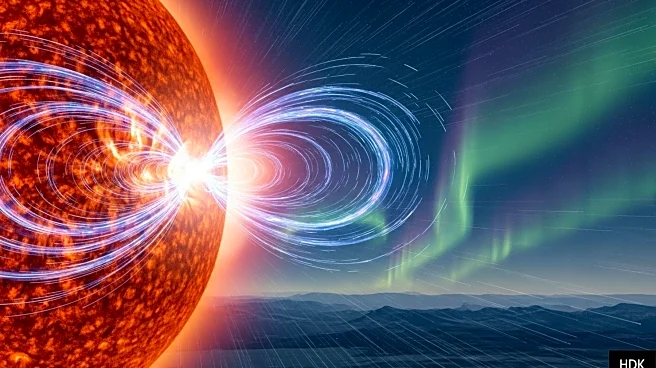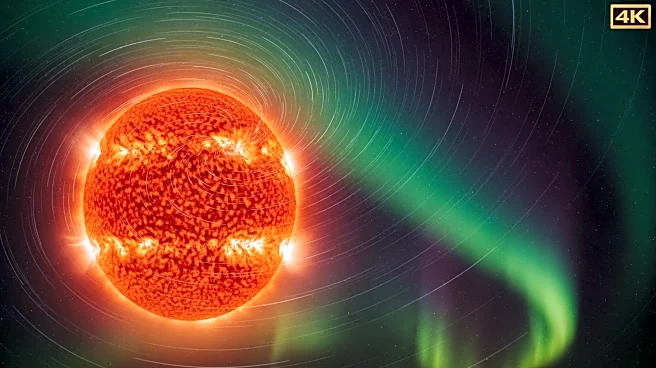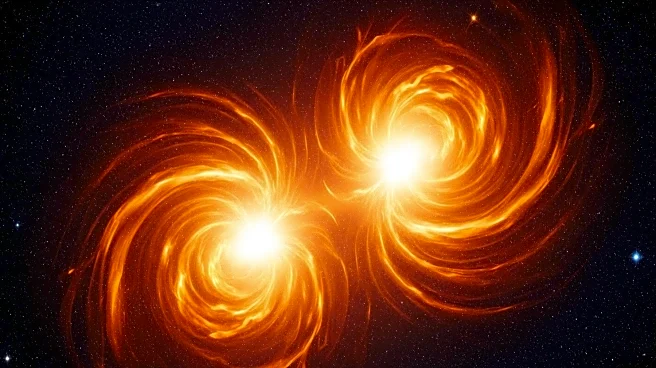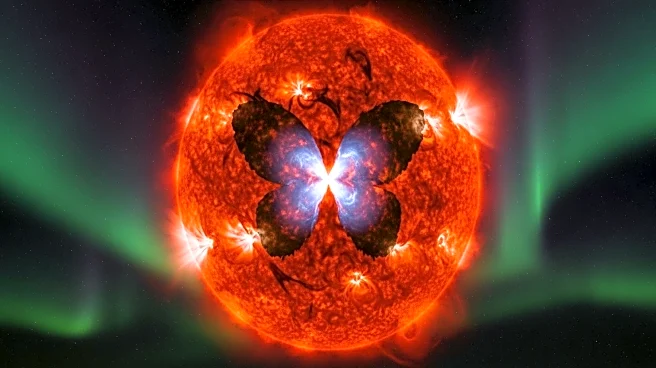What's Happening?
Scientists have forecasted a series of magnetic storms expected to occur between September 15 and 20, 2025. These storms, resulting from solar flares and coronal mass ejections, are anticipated to impact individuals sensitive to weather changes, particularly those with cardiovascular issues. The storms are predicted to vary in intensity, with a red-level Kp-5 storm on September 15, followed by moderate Kp-4 storms on September 16 and 18-19. The magnetosphere is expected to stabilize by September 20, reducing the likelihood of further disturbances. Symptoms associated with these storms include headaches, dizziness, blood pressure fluctuations, irritability, fatigue, and exacerbation of chronic conditions.
Why It's Important?
Magnetic storms can have significant health implications, particularly for vulnerable groups such as individuals with cardiovascular diseases, hypertensive patients, and the elderly. These disturbances can lead to increased healthcare needs and potential strain on medical services. Understanding the impact of magnetic storms is crucial for public health planning and individual preparedness. The storms highlight the interconnectedness of solar activity and human health, emphasizing the need for continued research and monitoring to mitigate adverse effects.
What's Next?
As the magnetic storms approach, healthcare providers may need to prepare for an increase in patients experiencing related symptoms. Individuals are advised to follow medical guidance, including staying hydrated, avoiding stimulants, and monitoring blood pressure. Public health advisories may be issued to inform and protect those most at risk. Continued observation by space weather agencies will be essential to provide timely updates and minimize health impacts.
Beyond the Headlines
The occurrence of magnetic storms underscores the broader implications of space weather on Earth. These events can affect not only human health but also technological systems, including communication networks and power grids. The need for comprehensive strategies to address the multifaceted impacts of space weather is increasingly important as solar activity continues to influence various aspects of life on Earth.










